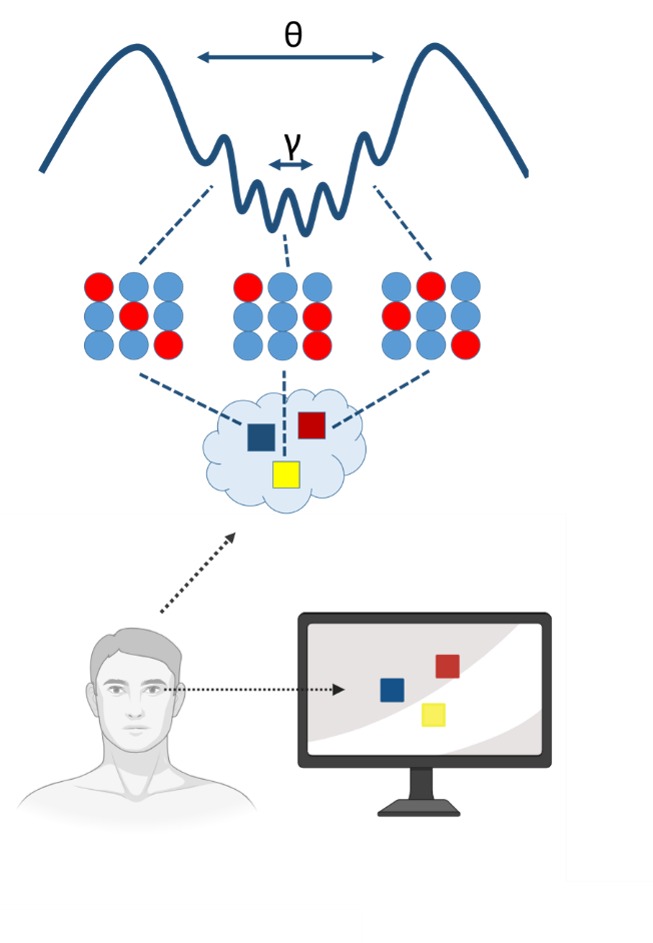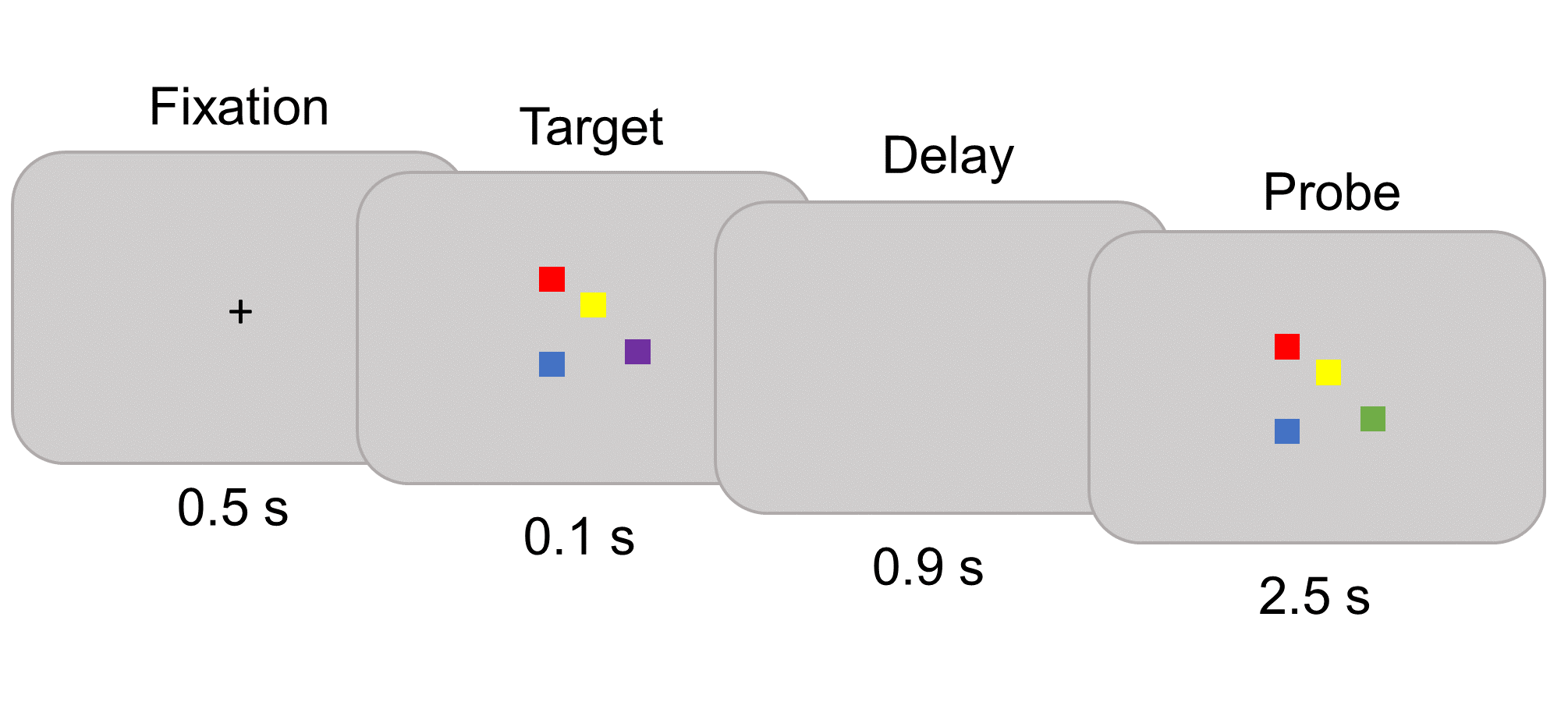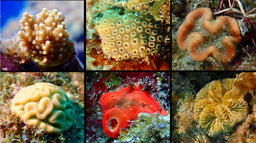Enhancing visual working memory through flickers and beeps
Published in Neuroscience

Ever found yourself squinting at rows of time-series data, searching for that elusive pattern? Or perhaps you’ve struggled to enter a long Wi-Fi password on your phone during a conference, glancing back and forth to get it right. These everyday situations underscore the frustrating limitations of our visual working memory (vWM)—a type of short-term memory that temporarily stores visual information to complete tasks at hand.
Unfortunately, vWM capacity is highly limited. On average, a healthy young adult can retain only 3–4 simple items—such as colors—in their vWM at any given moment[1]. While this capacity tends to remain stable within individuals, it varies significantly across people.
Crucially, greater visual working memory capacity is associated with better performance in a range of cognitive tasks, including decision-making, goal-directed behavior, and mathematical reasoning[1]. Moreover, deficits in vWM are commonly observed in various psychiatric and neurological conditions, such as schizophrenia[2] or after a stroke[3].
Thus, enhancing vWM capacity could benefit not only individuals with inherently lower capacities but also those affected by such conditions. However, to achieve this, we must first gain a deeper understanding of the mechanisms that limit vWM.
Understanding working memory capacity: a theta-gamma model
One popular model of working memory suggests that the interaction between fast and slow brain oscillations may determine its capacity. Specifically, the model proposes that each memory item is represented by a group of neurons firing synchronously at a fast gamma frequency (30–100 Hz). To prevent interference, the timing of each group’s activity is coordinated by the phase of a slower theta rhythm (4–7 Hz). This interplay between the two frequencies sets a physiological limit on working memory capacity, as only a limited number of gamma cycles can fit within a single theta cycle[4].

But what if we could alter the length of a theta cycle? Could more gamma cycles—or memory items—fit within it? Neural entrainment might offer a mechanism to achieve this. Neural entrainment refers to the brain’s tendency to synchronize the phase of its internal oscillations with the phase of external rhythmic stimuli[5]. When the external stimulation is sufficiently strong, it can not only align the phase but also slightly adjust the frequency of internal brain oscillations, either speeding them up or slowing them down[6].
Early evidence from studies using transcranial electric stimulation (tACS) suggests that stimulating parietal brain regions at 4 Hz may increase working memory capacity, while 7 Hz stimulation might reduce it[7–9]. However, electrical stimulation isn’t the only way to modify brain oscillations; similar effects can be achieved through trains of rhythmic sensory stimuli, such as visual flickers or sounds. If effective, sensory stimulation could make neural entrainment accessible for broader and more practical applications outside the laboratory.
Our study: using flickers and beeps to boost visual working memory
In our study, we tested whether sensory entrainment could modify visual working memory capacity in line with the theta-gamma model. To do this, we employed a classic vWM task called the 'change detection task,'[10] which quantifies participants' memory capacity. In this task, participants were asked to remember the colors of 4 to 7 squares for a brief period and report whether any of the colors had changed after a short delay. Using this framework, we conducted six experiments involving 4 Hz and 7 Hz visual flicker and auditory beep stimulation.

We hypothesized that 4 Hz stimulation would enhance vWM capacity, while 7 Hz stimulation would reduce it, mirroring findings from prior studies using electrical stimulation. So, did it work? Not entirely. While sensory stimulation overall increased vWM capacity, the observed pattern contradicted our expectations: 7 Hz stimulation enhanced memory capacity more than 4 Hz stimulation. Interestingly, the improvement was most pronounced in participants with smaller baseline memory capacity, suggesting that individuals with lower memory abilities benefited more from sensory stimulation.
We speculated that sensory stimulation might have enhanced participants’ arousal levels, aiding their ability to maintain focus on the task. However, two control experiments showed no significant effects of sensory stimulation on either phasic or tonic arousal.
Given this evidence, we considered that our sensory stimulation may have influenced a different type of theta oscillations in the frontal-midline brain region, rather than the parietal-occipital theta typically linked to working memory capacity. Alternatively, it might have altered participants’ temporal expectations. Further research is necessary to support these hypotheses and to better understand how sensory entrainment impacts working memory and other higher cognitive functions.
References
- Luck, S. J. & Vogel, E. K. Visual working memory capacity: from psychophysics and neurobiology to individual differences. Trends Cogn. Sci. 17, 391–400 (2013).
- Liu, Y. et al. Face and object visual working memory deficits in first-episode schizophrenia correlate with multiple neurocognitive performances. Gen. Psychiatry 34, (2021).
- Lugtmeijer, S., Lammers, N. A., de Haan, E. H. F., de Leeuw, F. E. & Kessels, R. P. C. Post-Stroke Working Memory Dysfunction: A Meta-Analysis and Systematic Review. Neuropsychology Review vol. 31 202–219 (2021).
- Lisman, J. Working memory: The importance of theta and gamma oscillations. Curr. Biol. 20, R490–R492 (2010).
- Thut, G., Schyns, P. G. & Gross, J. Entrainment of perceptually relevant brain oscillations by non-invasive rhythmic stimulation of the human brain. Front. Psychol. 2, 1–10 (2011).
- Notbohm, A., Kurths, J. & Herrmann, C. S. Modification of brain oscillations via rhythmic light stimulation provides evidence for entrainment but not for superposition of event-related responses. Front. Hum. Neurosci. 10, (2016).
- Wolinski, N., Cooper, N. R., Sauseng, P. & Romei, V. The speed of parietal theta frequency drives visuospatial working memory capacity. PLoS Biol. 16, 1–17 (2018).
- Bender, M., Romei, V. & Sauseng, P. Slow Theta tACS of the Right Parietal Cortex Enhances Contralateral Visual Working Memory Capacity. Brain Topogr. 32, 477–481 (2019).
- Guo, X., Li, Z., Zhang, L. & Liu, Q. Modulation of visual working memory performance via different theta frequency stimulations. Brain Sci. 11, (2021).
- Luck, S. J. & Vogel, E. K. The capacity of visual working memory for features and conjunctions. Nature 390, 279–281 (1997).
Follow the Topic
-
Communications Psychology

An open-access journal from Nature Portfolio publishing high-quality research, reviews and commentary. The scope of the journal includes all of the psychological sciences.
Related Collections
With Collections, you can get published faster and increase your visibility.
Replication and generalization
Publishing Model: Open Access
Deadline: Dec 31, 2025
Intensive Longitudinal Designs in Psychology
Publishing Model: Open Access
Deadline: Mar 31, 2026



Please sign in or register for FREE
If you are a registered user on Research Communities by Springer Nature, please sign in